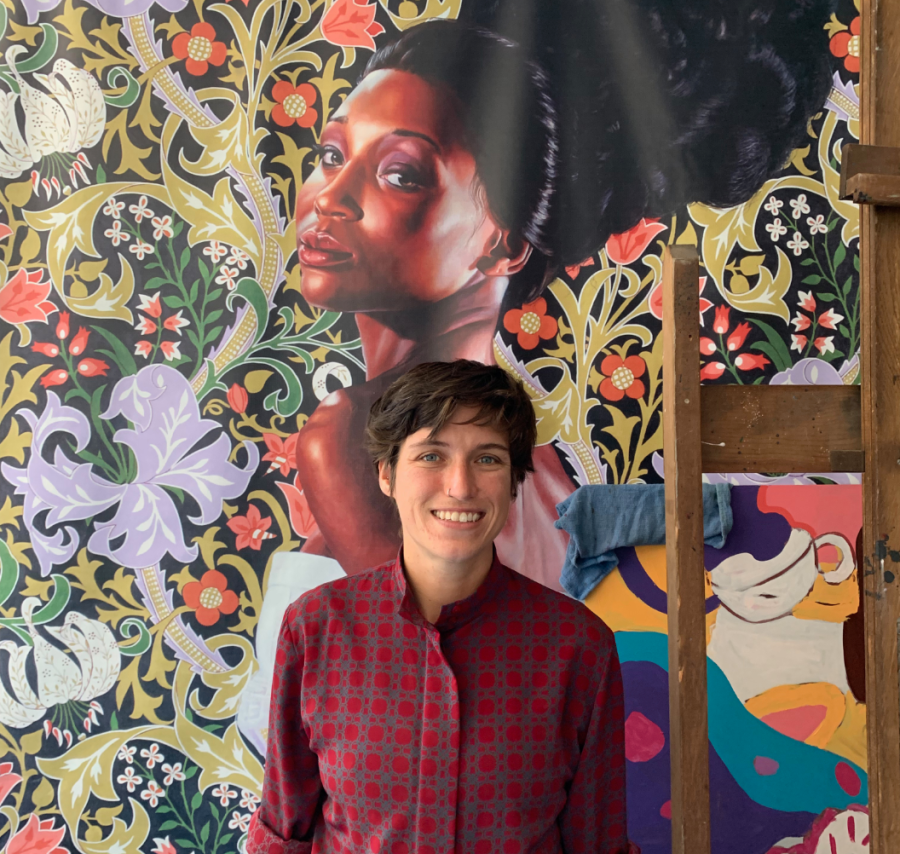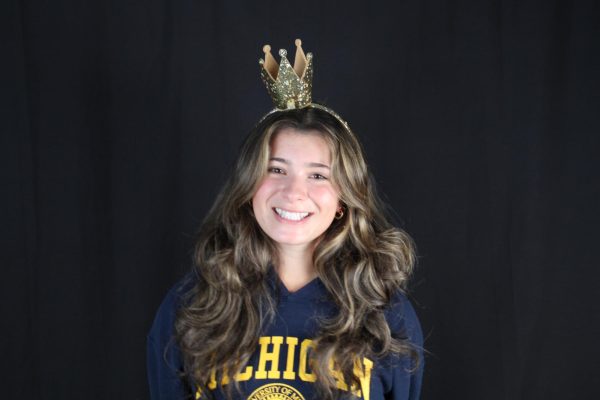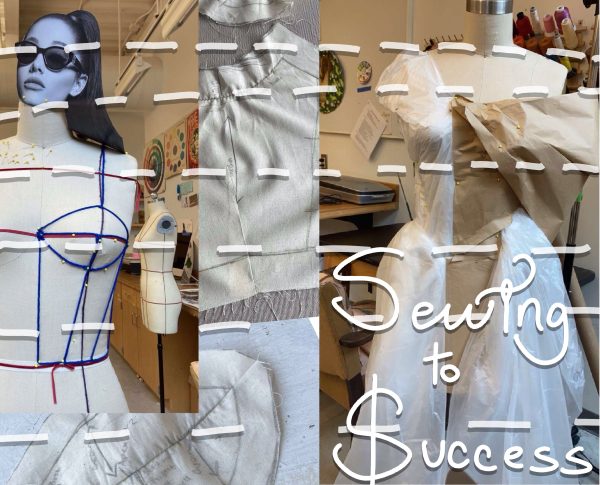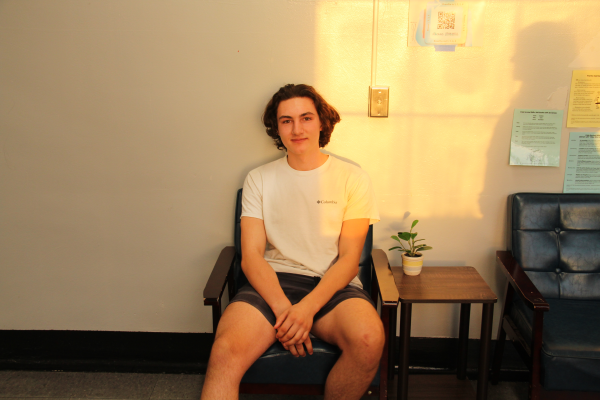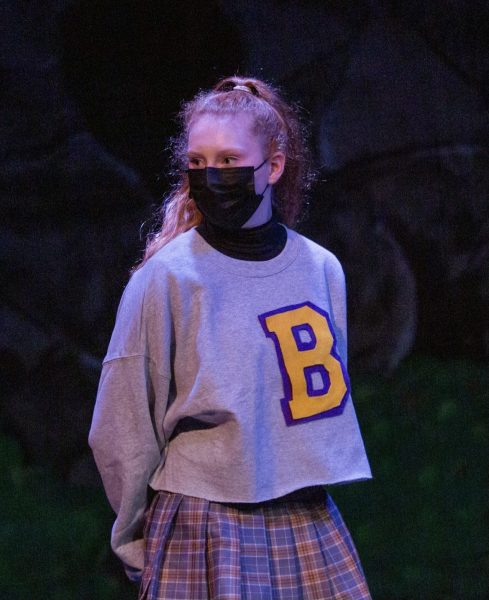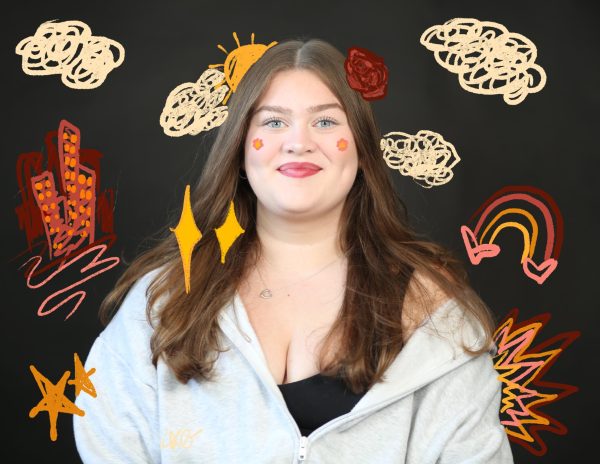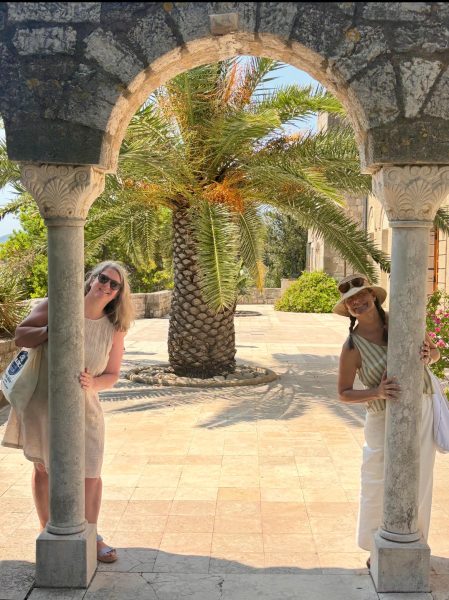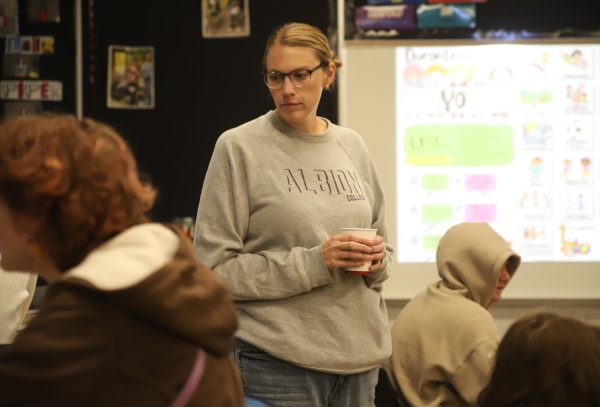Meet Hannah Crabtree, New Art Teacher at CHS
The newest member of staff weighs in on teaching art, alternative learning, and their first impressions of the CHS community.
Hannah Crabtree poses in the brightly-colored art room. They love teaching art for its flexibility as a subject— encouraging people to find their own paths to art is what their class is all about.
The art room, a light-filled, paint-stained classroom tucked away in the southwestern corner of the first floor, has a new teacher in residence. Smiling, plaid-clad Hannah Crabtree is the newest addition to the Community High School Staff.
Crabtree, an Ohio native who recently moved to Ypsilanti, taught at other alternative schools before coming to CHS. To them, the grind of deadlines, the busywork and the constant undertone of being taught how to comply with authority associated with a regular school are detrimental to learning. Instead, the schools they prefer to teach at are based on mastery of a subject, as opposed to strict testing. Schools that allow for nontraditional teaching methods and encourage relationships with teachers align with their values personally and professionally. Especially for teaching art, Crabtree thinks their chosen subject should never be a heavily-graded, transactional class only taken for credit. They see appreciation for art and creativity beyond the classroom as something that can only be gained through flexibility in class.
“[Art] is a very dynamic classroom to be in because there’s a lot of openness to the class, just due to the subjectivity of art,” Crabtree said. “There’s a lot of different directions to go in. That’s what the point of art class should be, I think, is to encourage people to go in different directions, find their own path, figure out what interests them, and what gets them feeling excited about creativity. It should never be just checking boxes and doing the rubric.”
On the first day of school, Crabtree asks each student to introduce themselves and how they feel about taking an art class. Everything from “I just need to graduate” to “I fill a sketchbook every week” is fair game, and Crabtree works with both kinds of people every year. They feel strongly about encouraging the internal, introspective aspect of making art as opposed to looking for external validation — in fact, it’s the part of the class that means most to them.
“My favorite part about teaching art is that it gives students a chance to connect with themselves that a lot of times doesn’t exist directly in other contexts,” Crabtree said. “A lot of the time, self expression isn’t valued like ‘hard skills.’ But I think we saw, especially over the pandemic, that there’s a lot of merit in learning about the socio-emotional aspect of yourself. So art can be such a catharsis for people, and such a way to bring people together.”
Crabtree has been interested in getting to know CHS students and the way they interact with one another within the school. So far, the impression has been mostly positive.
“I’m impressed that a lot of students have this intrinsic collaborative nature to them,” Crabtree said. “I see people that are going out of their way to be community-minded or that are doing things to help others and support the group. Nobody tells them to do it, it just seems like an instinct.”
As drop-add ends and the rhythm of the year’s normal schedule sets in, Crabtree is getting to know the school and the way its students work together better, and throughout the year, they’re going to have lots of time to continue to form relationships and get to know the building and its denizens.
“[Community] really aligns with a lot of things I value as a person and as an educator,” Crabtree said. “And there’s so much opportunity here: with the way the school is set up, there’s just so many different directions to take that I’m very excited to have the time to get to know people and explore. This really seems like a place where it’s not going to be a linear path.”




